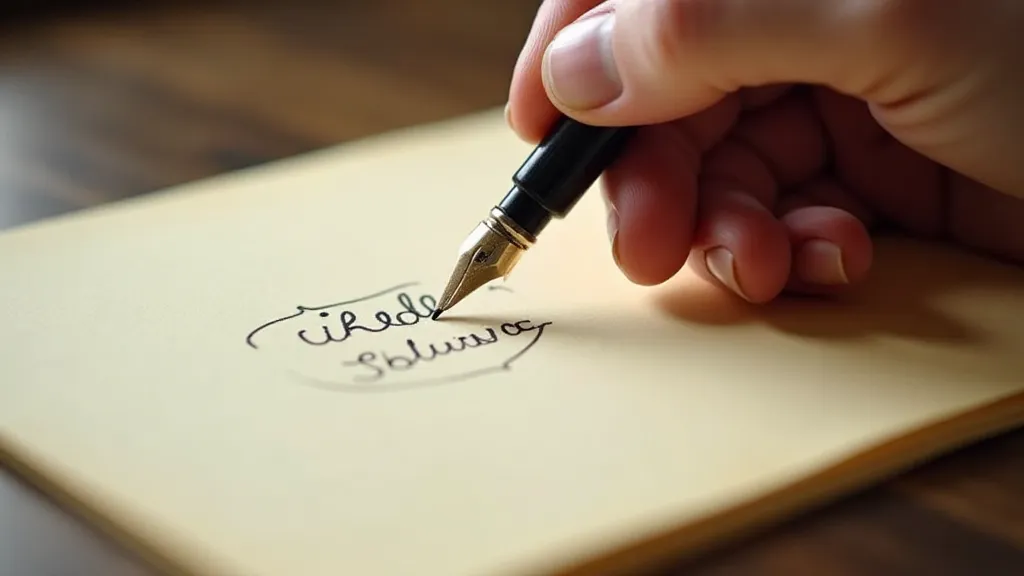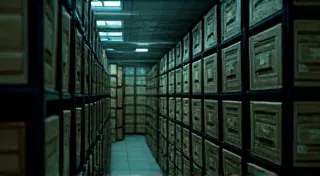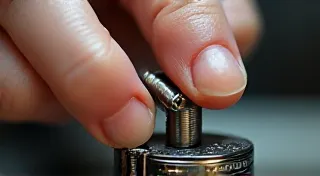The Collector's Resonance: Why Antique Pens Evoke Nostalgia & Connection
There’s a particular weight to holding a well-worn antique pen. It’s not just the physical weight of brass, celluloid, or ebonite, but a heftiness imbued with history, a tangible link to a time when correspondence was a deliberate act of creation, not a fleeting digital exchange. The pursuit of these writing instruments isn't merely about acquiring objects; it's about collecting fragments of the past, about feeling a resonance with the hands that held them before, and the words they penned.
My own journey into the world of antique pens began unexpectedly. I was clearing out my grandfather's attic, a trove of forgotten memories. Amongst dusty trunks and faded photographs, I found a small, unassuming box. Inside, nestled in velvet lining, lay a Parker Duofold from the 1920s. It wasn't pristine; the celluloid was faded, and the gold nib bore the marks of years of use. But as I held it, something shifted. It wasn’t just an object anymore; it felt like a portal. A portal to a time when my grandfather, a young man full of dreams, might have used it to write letters to his sweetheart.
The Weight of History: More Than Just Ink
Antique pens, unlike modern disposable alternatives, represent an era of craftsmanship and deliberate design. They were objects meant to last, often passed down through generations. Consider the Waterman pens of the late 1800s, pioneers in the fountain pen industry. George Waterman’s innovative "piston filler" mechanism, patented in 1888, revolutionized pen filling and set a new standard for reliability. To hold one is to hold a piece of that innovation, a physical manifestation of human ingenuity.
The very materials used speak volumes. Celluloid, with its vibrant colors and subtle patterns, was a marvel of early plastics. Ebonite, a hard rubber prized for its durability, evokes a sense of solidity and permanence. The nibs, often crafted from precious metals like gold and platinum, were painstakingly ground and shaped to produce a specific writing experience – a particular line width, a specific flexibility. These weren't mass-produced; they were labors of love, produced by skilled artisans. Each scratch, each imperfection, tells a story of its creation and its life.
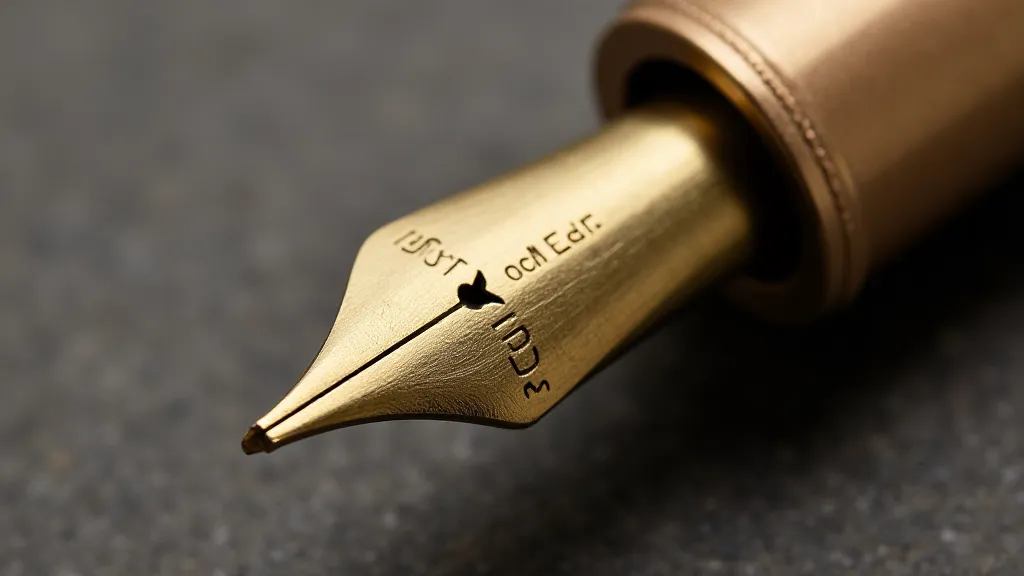
The Tactile Experience: A Connection to the Past
The tactile experience of writing with an antique pen is unlike anything modern pens can offer. There’s a certain *give* to a vintage nib, a flexibility that responds to the pressure of your hand. It’s a subtle difference, almost imperceptible, but profoundly satisfying. It transforms writing from a mechanical process into an almost sensual one. You're not just moving ink across paper; you’re engaging with the history and the craftsmanship in a deeply personal way. The slight warmth of the pen in your hand, the faint scent of old ink, the gentle scratch of the nib against the paper – it all contributes to a richer, more evocative experience.
Think about the Conway Stewart pens, British icons known for their distinctive “75” model. Their mottled patterns, often created through layering different colored celluloid, are unique and beautiful. To hold one is to appreciate the artistry of the craftsman, the skill required to achieve such intricate designs. These pens weren’t just tools; they were statements of style and sophistication. The way designers of the era considered form and function is fascinating, and it begs the question: how have pen designs evolved throughout the years, and what does this tell us about our changing relationship with writing? For those interested in a deeper dive, the exploration of mapping pen designs through time offers compelling insights.
Beyond Function: The Emotional Resonance
The psychological drivers behind collecting antique pens extend far beyond mere appreciation for aesthetics or historical significance. There’s a deep-seated desire to connect with the past, to bridge the gap between our present and a time that often feels both distant and intensely alluring. The pens are proxies for that connection. They are tangible links to a bygone era, allowing us to imagine the lives of those who used them.
For some, it’s about the romance of correspondence – the deliberate act of writing a letter, the anticipation of a reply, the tangible expression of connection. For others, it’s about appreciating the craftsmanship and the ingenuity of the past. Still others find solace and satisfaction in the challenge of restoration – bringing a neglected treasure back to life, revealing the beauty that lies beneath the grime and the wear.
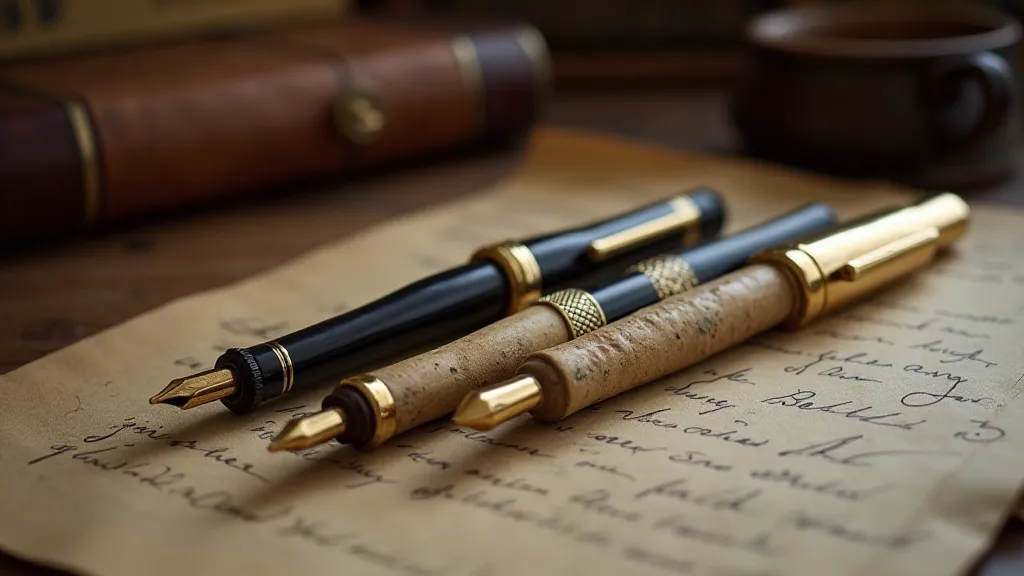
Collecting Considerations: Preservation & Restoration
Entering the world of antique pen collecting can be a deeply rewarding experience, but it’s not without its considerations. Condition is paramount. While some wear is to be expected (and even desirable – it tells a story!), significant damage can detract from the value and the enjoyment of the pen. Restoration can be a delicate process, requiring specialized knowledge and tools. Attempting to restore a pen without proper training can easily cause more harm than good.
Understanding the nuances of different brands is also crucial. Parker, Waterman, Conway Stewart, Sheaffer – each brand has its own distinctive characteristics, its own history, and its own loyal following. Research is key. Joining online forums and connecting with experienced collectors can provide invaluable insights and guidance. The study of how pens have adapted to the digital age, and how designs have redefined personal narratives, is an intriguing topic, explored in greater detail in a fascinating article about reimagining pen design in the digital age.
The subtle differences between a Parker "Vacumatic" and a Parker "Duofold," for instance, can significantly impact their value and collectibility. The Vacumatic, with its pressurized filling system, was a technological marvel of its time, while the Duofold represented Parker’s enduring commitment to classic design. Recognizing these distinctions elevates the collecting experience from mere acquisition to informed appreciation. The very form of pens often reflects the journey of an individual, and tracing these patterns is a unique way to explore identity, as demonstrated by exploring a cartographer of moments and their pen design.
The Enduring Legacy
Antique pens are more than just writing instruments; they are vessels of history, conduits of emotion, and testaments to human ingenuity. They offer a unique opportunity to connect with the past, to appreciate the beauty of craftsmanship, and to experience the joy of writing in a truly meaningful way. The collector's resonance isn't just about possessing an object; it’s about fostering a relationship with a piece of history, a tangible link to a time when words held a different kind of weight, and when the simple act of writing was a deliberate and cherished expression of the human spirit. The transformation of simple ingredients into elegant ink, and how that ink then shapes narratives, is a poetic art form – an alchemical process explored in detail in quill and crucible: the alchemical transformation of ink into narrative.
